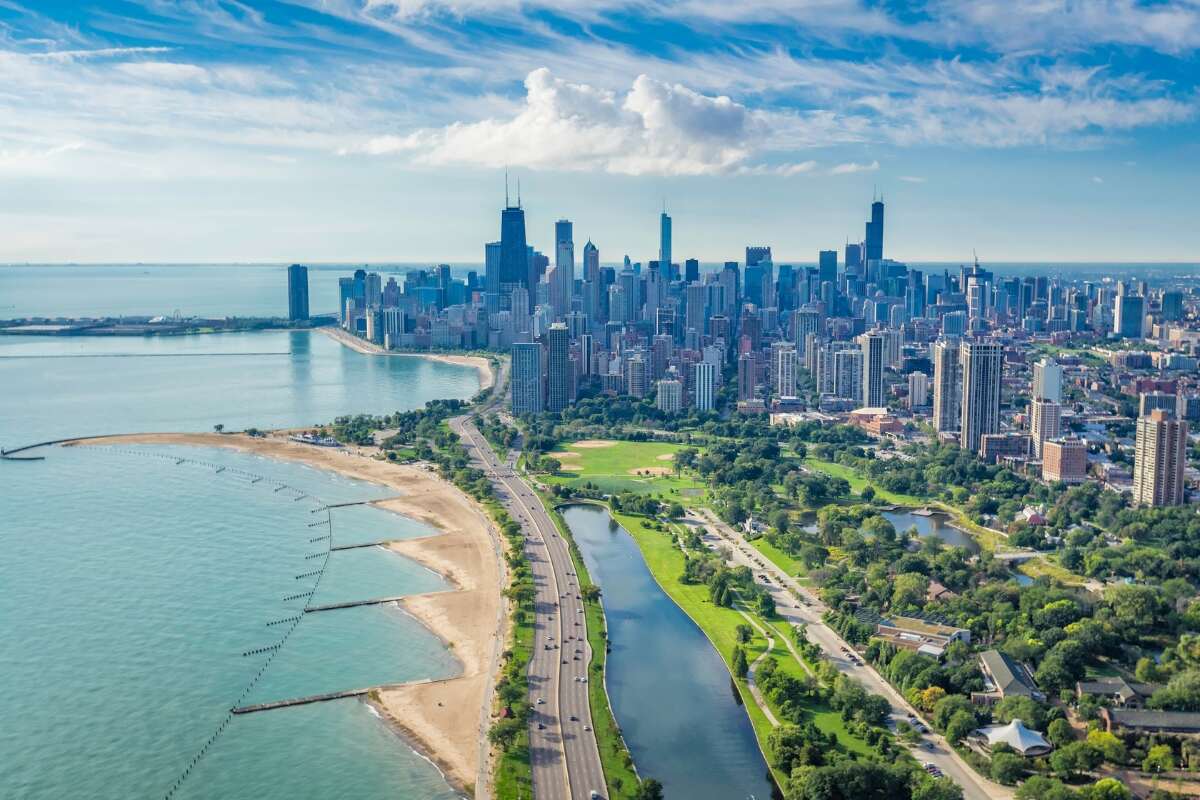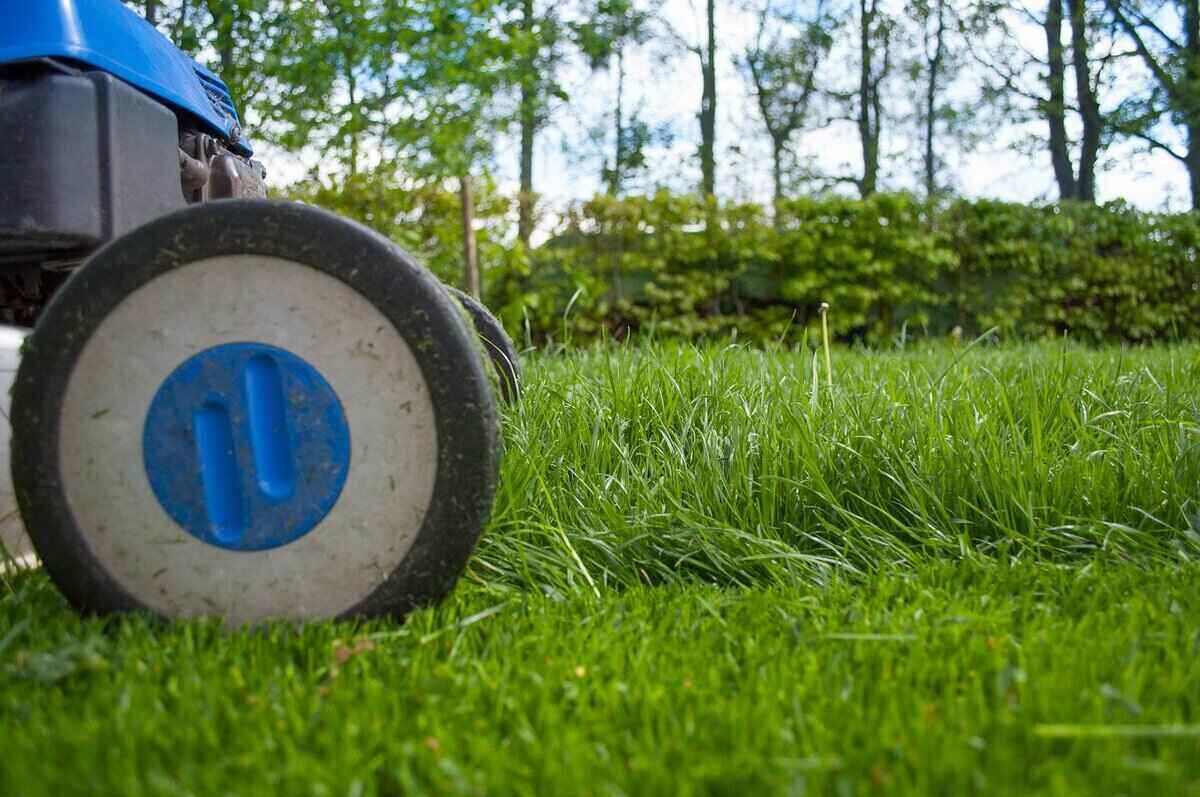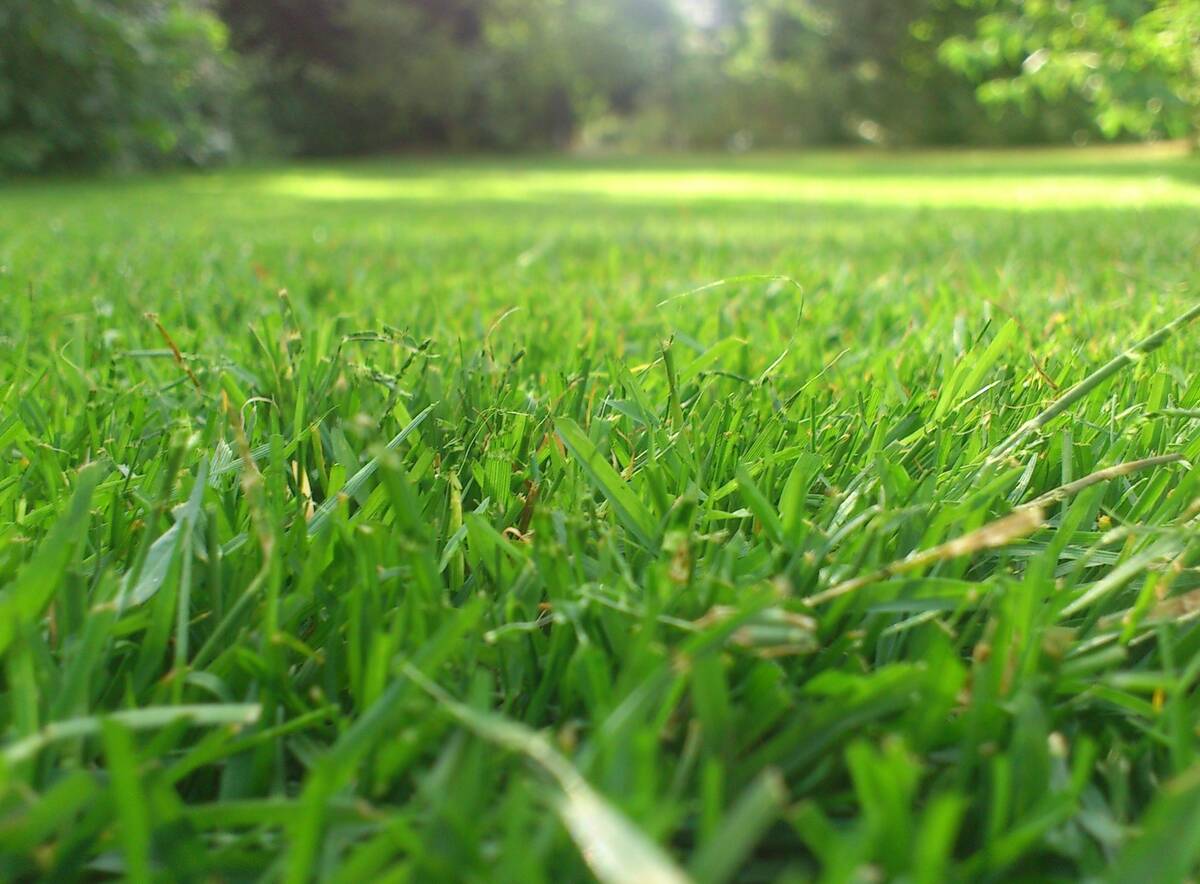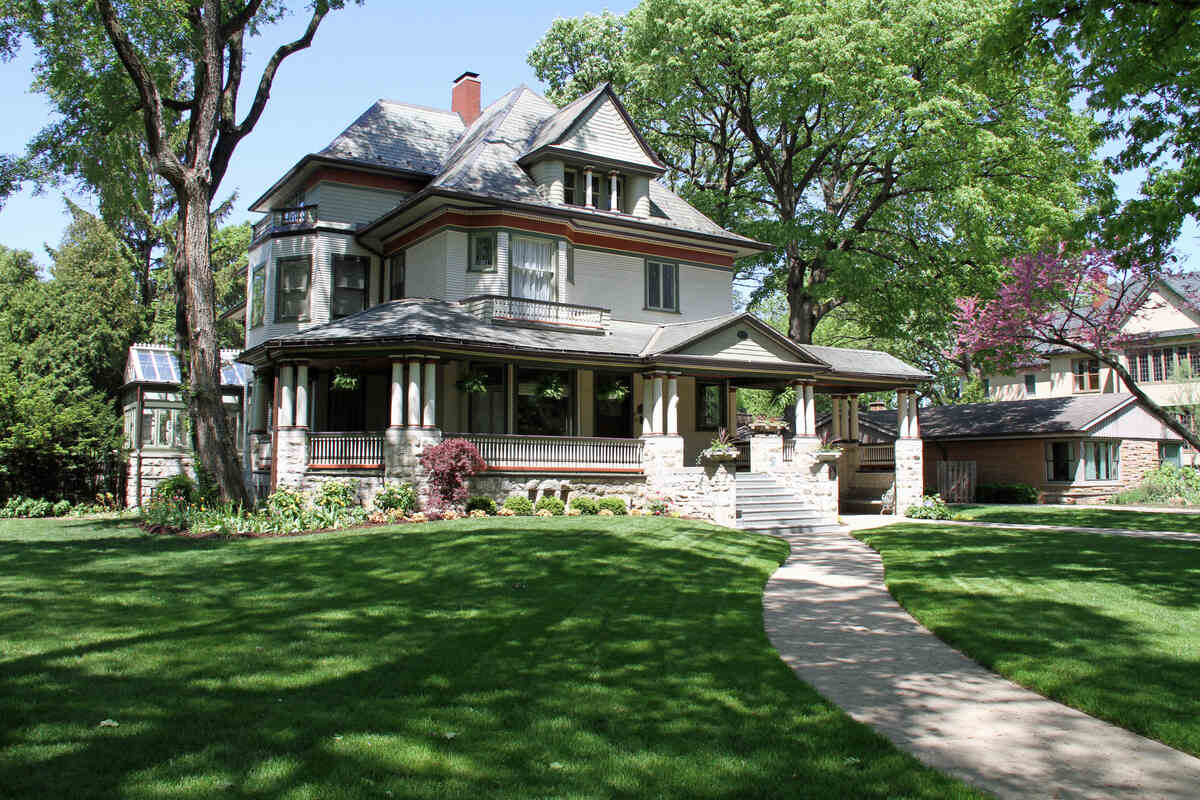
Living in Illinois, you surely know why it’s called The Prairie State, thanks to the miles and miles of prairie grasses that used to cover its fertile lands. A blank canvas for your dream lawn, right? But here’s the catch: the scorching summers and bone-chilling winters across the state aren’t exactly best friends with every grass type. So, let’s roll up our sleeves and figure out the best grass seed for Illinois lawns that stay green and lush throughout the year.
Kentucky Bluegrass

Photo Credit: Shutterstock
Kentucky bluegrass is the star player of Illinois lawns, boasting a lush, vibrant hue that oscillates between bluish and dark green. Its resilience in harsh winters and ability to heal from damage make it a favorite among homeowners, especially up north.
However, this beauty demands attention, needing regular mowing, watering, and fertilizing.
While it thrives in full sunlight, some cultivars tolerate light shade.
Mix it with fine fescue for a power couple lawn combo since fine fescue tolerates shade better. It’s recommended to plant or overseed Kentucky bluegrass between fall and early spring, as this cool-season grass enters a dormant state in the summer. Though it’s a durable rock star, it’s also a diva, prone to diseases and demanding high maintenance.
Pro Tips:
- Set the mowing height between 2.5 and 3.5 inches.
- Fertilize your lawn grass about 3 to 4 times a year, spaced 4-6 weeks apart. Kick-off in early spring to wake up the grass and wrap up by late fall before snow hits. Fall is crucial for strengthening roots, especially for Kentucky bluegrass, to survive tough summers.
- Keep it well watered, going for at least 1 inch of water weekly from irrigation or rainfall during summer months.
Quick Facts:
- Classification: Cool-season grass
- Spreads by: Rhizomes
- Shade tolerance: Low
- Drought tolerance: Moderate
- Foot traffic tolerance: Moderate
- Maintenance needs: Moderate mowing frequency and high fertilization needs
- Mowing height: Maintain a mowing height of 2.5 to 3.5 inches.
- Potential for disease: Moderate to high; susceptible to dollar spot, leaf spot, necrotic ring spot, summer patch, and stripe smut
- Soil pH: 6-7.5
- Soil type: Best in well-drained, heavy soils with high fertility, i.e. clay
Grass Seed Options:
– Jonathan Green (11970) Blue Panther Kentucky Bluegrass Grass Seed (3 lbs.)
– SeedRanch Midnight Kentucky Bluegrass Seed (5 lbs.)
Fine Fescue
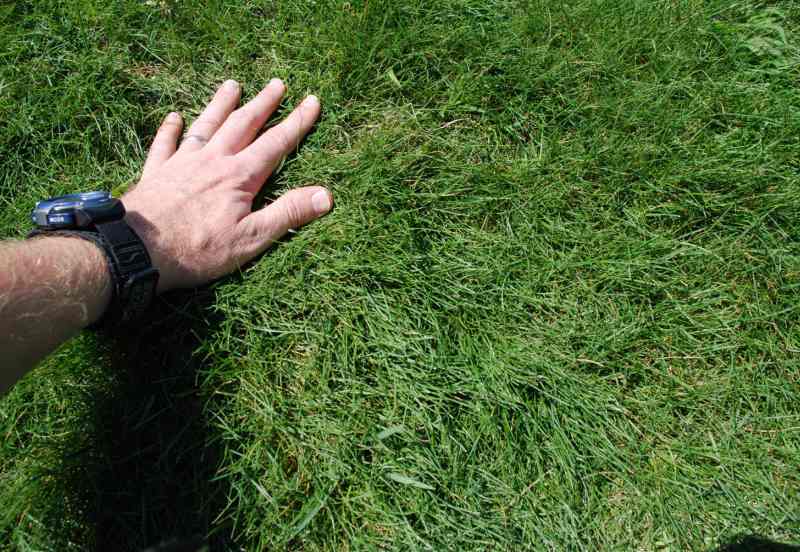
Aaron J. Patton, Ph.D. / Turfgrass Extension Specialist at Purdue University
Fine fescue is perfect for Illinoisans with shady soil and little time for maintenance. This cool-season grass has thin blades, giving a delicate appearance to your lawn. It’s not picky and will grow in shady areas with bad soil and even a bit of acidity, but truth be told, well-draining soil is its jam.
It’s only moderately tolerant to foot traffic, so you might want to keep an eye on the kiddos and four-legged pals tearing through the yard.
Many homeowners find that fine fescue works well when combined with Kentucky bluegrass and perennial ryegrass, especially in partially shaded lawns. It’s best to plant these grass seeds in fall or spring, as they struggle to survive hot summers.
Pro Tips:
- Creeping red fescue is a popular choice to plant alone due to its texture, while hard and chewing fescues work well when combined with other varieties. These fine fescue varieties are a good option if your yard has a mix of both shade and sun.
- Mow it every 10 to 14 days at a height of 2.5 to 4 inches, depending on the species.
- Avoid overwatering. It needs about one inch of water each week.
Quick Facts:
- Classification: Cool-season grass
- Spreads by: Creeping red fescue spreads via rhizomes, whereas other fine fescues like Chewings, hard, and sheep fescues are bunch-type grasses.
- Shade tolerance: Moderate to High
- Drought tolerance: Moderate to High
- Foot traffic tolerance: Low to Moderate
- Maintenance needs: Low fertilizer and mowing needs
- Mowing height: Adjust your mower’s blade height so it’s just right; somewhere between 2.5 and 4 inches should do the trick, but remember, it depends on what kind of fine fescue you choose to grow.
- Potential for disease: Moderate. Common diseases include red thread, leaf spot, dollar spot, summer patch, and powdery mildew.
- Soil pH: 6-6.5
- Soil type: Doesn’t do well in wet soil; prefers drier soils; rocky, sandy, well-draining clay
Grass Seed Options:
– Outsidepride Legacy Fine Fescue Grass Seed (5 lbs.)
– Eretz Creeping Red Fine Fescue Seed (choose your size)
– Outsidepride Creeping Red Fine Fescue Grass Seed (25 lbs.)
– Outsidepride Hard Fine Fescue Grass Seed (10 lbs.)
Tall Fescue

Aaron J. Patton, Ph.D. / Turfgrass Extension Specialist at Purdue University
If you want a tough friend for your lawn, tall fescue is an ideal option. It tolerates both heat and drought better than many other cool-season grasses, so it can handle Illinois’s inconsistent climate.
Tall fescue is low-maintenance and can grow in different soil types, including clay and sandy ones. However, if you want to see it really kick up its heels and dance, stick it in some fertile soil that drains well. It can handle some shade, but a bit of direct sunlight does wonders for its growth!
This hardy grass, gifted with a deep root system, takes in nutrients and water efficiently and is quite resistant to diseases.
While without doubt one of the tougher cool-season grasses, it’s still not completely exempt from all risks. It may not produce a beautiful, manicured appearance due to its thicker blades and may become more prone to diseases during extended periods of drought.
Pro Tips:
- It’s important to maintain a balanced soil pH level between 5.5 and 6.5 for tall fescue to thrive.
- Fertilize up to three times a year, applying 1 pound of nitrogen per 1,000 square feet each time. (March to early April; mid-September to November)
- Mow every 5 to 7 days, setting your mower height between 2 and 3 inches.
- Water 1 to 1¼ inches a week.
- Mix tall fescue with other grasses, as tall fescue alone may clump and have an uneven surface. It is usually mixed with Kentucky bluegrass, leading to a beautiful and strong lawn.
Quick Facts:
- Classification: Cool-season grass
- Spreads by: Produces short rhizomes but has a bunch-type growth habit
- Shade tolerance: Moderate
- Drought tolerance: Moderate to High
- Foot traffic tolerance: Moderate
- Maintenance needs: Frequent mowing
- Mowing height: Set mowing height to 2 inches when grass reaches 3 inches tall
- Potential for disease: Resists diseases well with proper care
- Soil pH: 5.5-6.5
- Soil type: Loamy, sandy, clay, silt
Grass Seed Options:
– Triple-Play Tall Fescue Grass Seed Blend (5000 sq ft)
– Eretz Kentucky 31 K31 Tall Fescue Grass Seed (choose your size)
– Pennington The Rebels Tall Fescue Grass Seed Mix (7 lb.)
Perennial Ryegrass
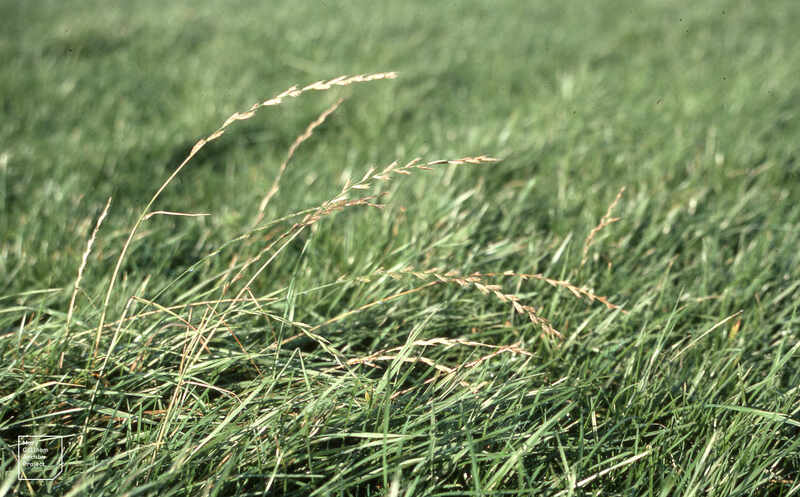
Photo Credit: Dr Mary Gillham Archive Project / Flickr / CC BY 2.0
Perennial ryegrass is one of the best choices for Illinois’s climate. It’s a cool-season variety that shoots up fast and embeds itself firmly into the earth. It’s also a fan of soaking up some sun. It’s a grass with needs, so you’ll have to give your soil plenty of nutrients, as well as an ample amount of water to prevent wilting.
It can survive chilly winters in northern Illinois and beat scorching summers in the southern part of the state. It’s versatile enough to be planted as a companion with other grass species and used as a winter grass in areas with more temperate climates. Got some shade in your yard? No biggie. Toss in some Kentucky bluegrass or fine fescue with your perennial ryegrass. They play well together.
Sadly, it lacks rhizomes or stolons, but it grows in bunches and uses upright shoots, known as tillers, to firm up and steady the soil. This feature lets it recover from wear and tear, making it perfect for high-traffic spots like sports fields.
Pro Tips:
- Aim for an inch of water each week, either from rainfall or irrigation.
- Feed your lawn 1 to 5 pounds of nitrogen per 1,000 square feet. As with Kentucky bluegrass, late August to early September is usually the prime window for fertilization.
- Don’t worry much about thatch, as perennial ryegrass doesn’t get too many lumps and bumps from it. But you should aerate every fall, as the roots need plenty of air to breathe.
- Use a mower height setting of 1.5 to 2.5 inches to get that perfect look.
Quick Facts:
- Classification: Cool-season grass
- Spreads by: Has a bunch-type growth habit
- Shade tolerance: Low, full sun to partial shade
- Drought tolerance: Low
- Foot traffic tolerance: High
- Maintenance needs: Moderate mowing and fertilization requirements. Thatch is not significant.
- Mowing height: Set mowing height to 1.5 to 2.5 inches
- Potential for disease: High. Common diseases include gray leaf spot, red thread, and leaf spot/melting-out.
- Soil pH: Thrives in pH 6-7 soils but can tolerate 5-8.
- Soil type: Likes well-drained, fertile soil but can handle some poor drainage.
Grass Seed Options:
– Outsidepride Perennial Ryegrass Seed (5 lbs.)
– Eretz ProTurf Perennial Ryegrass Fine Lawn Seed (choose your size)
Rough Bluegrass
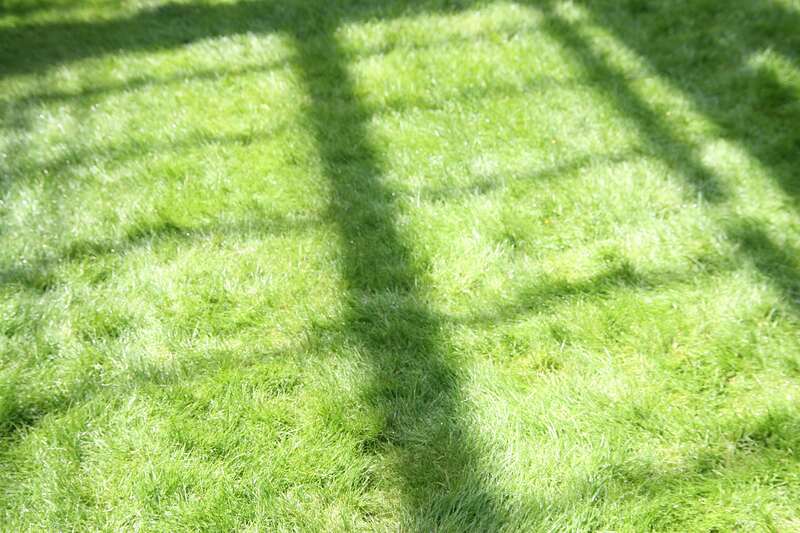
Photo Credit: David J. Stang / Wikimedia Commons / CC BY-SA 4.0
For better or for worse, rough bluegrass is known for its slightly weedy appearance. So, why bother? This cool-season grass works wonders in cool, wet climates like the north of Illinois, earning itself kudos for its beautiful blades and resilience.
The deep-seated root system gives it an edge in frequent rain or shaded areas. It has some issues with lawn diseases, though. It’s prone to gray snow mold, fairy ring, and brown patch.
Since it thrives in damp and shady loam soils with a neutral or slightly acidic pH, it’s a great choice for yards close to Lake Michigan’s coast. Plant it early on in the spring or fall to enjoy its perks.
Pro Tips:
- Mow it to a height of 1 to 2.5 inches for a respectable look.
- Fertilize roughly two times a year, going for 2 to 4 pounds of nitrogen per 1,000 square feet on each occasion.
- Water it anywhere between 1 and 1.5 inches per week.
- Be mindful of its low tolerance to foot traffic.
Quick Facts:
- Classification: Cool-season grass
- Spreads by: Stolons
- Shade tolerance: High
- Drought resistance: Low
- Foot traffic tolerance: Low
- Maintenance needs: Moderate, frequent mowing and fertilizing
- Mowing height: 1– 1.5 inches
- Potential for disease: High; susceptible to brown patch, fairy rings, gray snow mold, mushrooms, and puffballs
- Soil pH: 6–7
- Soil type: Rich, moist soils
Zoysiagrass
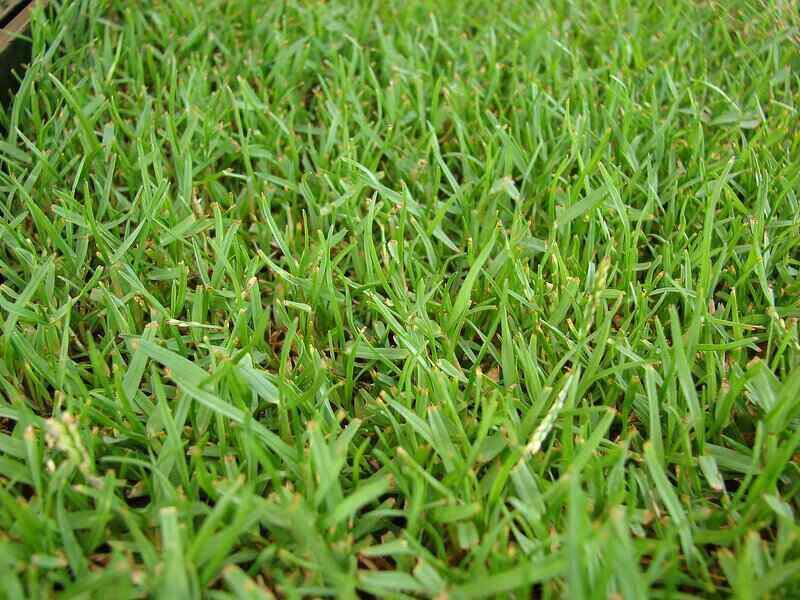
Photo Credit: Forest and Kim Starr / Wikimedia Commons / CC BY 3.0 US
If you’re living in the southern part of Illinois, Zoysiagrass might be the best choice for your lawn. Kenneth L. Diesburg, a turfgrass expert from SIUC, recommends it highly for folks in the transition zone. What’s the big deal, you ask? Zoysia boasts a robust root system that sets it apart from the crowd. It’s less needy than cool-season grasses like Kentucky bluegrass or fine fescue. Less maintenance, more chill time!
The beauty of Zoysia is that it grows lush and thick, fending off drought and trampling weeds like a champ. And once it settles in, it pretty much takes care of itself, needing way less fertilizer or herbicide than other grasses. Sure, you’ll have to water it and mow the lawn, but it’s not super demanding.
However, it’s not all sunshine and rainbows with Zoysiagrass. Patience is a virtue with this one. It takes its sweet time to grow when it’s first planted. Also, it’s not a fan of the cold, turning a not-so-pretty tan in winter. Moreover, it needs to be planted with plugs or sod, which are both usually pricer than seeds.
Pro Tips:
- Plant or overseed it between fall and early spring, when the soil and air temperatures are still too cool for germination.
- Use a pre-emergent herbicide in spring to prevent weed seed germination.
- It can be invasive, so it’s best to plant it in an area with clear boundaries so it won’t spread.
Quick Facts:
- Classification: Warm-season grass
- Spreads by: Stolons and rhizomes
- Shade tolerance: Moderate
- Drought tolerance: Moderate to High
- Foot traffic tolerance: High, but recovers slowly from damage
- Maintenance needs: Low nitrogen fertilization requirements, although it’s prone to thatch build-up. Regular mowing, at least once a week.
- Mowing height: Set mowing height between 1 and 2 inches.
- Potential for disease: Good disease tolerance overall
- Soil pH: 6 – 6.5
- Soil type: Well-draining; some cultivars are more tolerant of a wide range of soils than others.
Grass Plug and Seed Options:
– Zoysia Plugs (50 Large Grass Plugs)
– Zoysia Plugs (50 Full & Lush Grass Plugs)
– Zoysia Plugs (100 Plugs)
– Zenith Zoysia Grass Seeds (1/8 lb. of seeds)
Climate and Lawn Care Challenges in Illinois
Illinois’s climate presents a mixed bag of challenges for lawn and garden enthusiasts. From the sweltering heat of the southern tip to the frigid cold near Lake Michigan, the Prairie State experiences it all – hot, humid summers, chilly winters, and everything in between.
While the southern areas enjoy a more humid, subtropical climate with mild winters, the northern regions face cold winters with moderate to heavy snowfall. You can imagine how tricky it can be to grow the lawn of your dreams with such variability in the weather.
The USDA divides Illinois into several Hardiness Zones, from 5a in the northwest part to 7a in the far south. It’s essential to understand these zones before you pick the right kind of grass for your garden.
For instance, planning a lawn in Metropolis, IL? You’re in zone 7a. If you’re over in Chicago, you’re chilling in Zone 6a, while homeowners anywhere near Lake Michigan are residing in Zone 5. Your hardiness zone determines what kind of grass and other plants will be able to survive the coldest temperatures in your area. Check here to find your hardiness zone.
Quick Facts:
- Illinois typically sees about 40 inches of rain and a solid 22 inches of snow each year, although this can vary a bit depending on the region.
- The duration of the growing season without frost varies from 160 days in the northern regions to more than 190 days in the southern areas.
- Temperature varies from 48°F in the north to 58°F in the south.
With all that variation, it’s hard to choose best grass types for the state as a whole. For the most part, cool-season grasses are the way to go, but homeowners in the south might benefit from a warm-season grass such as Zoysia.
Best Grass Seed for Northern Illinois
Northern Illinois, with its blend of city and country vibes from Chicago to Rockford, sees some pretty harsh winters and hot, humid summers. So, if you plan on growing a lawn here, cool-season grasses are your best bet. Kentucky bluegrass is a popular choice because it’s tough, good-looking, and can bounce back from damage.
However, it does need a lot of sun and care. On the other hand, fine fescues are more laid-back and shade-tolerant but have a hard time recovering from heavy use. And don’t forget about perennial ryegrass – tough, fast-growing, and even better when mixed with other types of grasses.
So, mixing different grass species and cultivars is a smart move to get a good-looking and tough lawn. In Northern Illinois, it’s usually recommended to use a mix of Kentucky bluegrass, perennial ryegrass, and fine fescues. The particular blend you opt for will hinge on three key “how” queries:
- How much sun does your lawn get?
- How much maintenance are you willing to do?
- How do you plan on using your lawn?
University of Illinois Extension suggests some great grass seed mixes for Northern Illinois lawns, such as:
- Full sun areas: A Kentucky bluegrass blend with three to five cultivars is the first choice if you get plenty of sun.
- Sun/shade: For shady areas, including those with partial sun, a blend of Kentucky bluegrass and fine fescues is best.
- Deep shade: If your lawn is in deep shade, a fine fescue blend specifically for dry shade is the way to go. And, for the utmost low maintenance, you might consider using a full-shade-tolerant ground cover, such as some native Illinois flowers and plants, like ferns.
Best Grass Seed for Central Illinois
This region, also known as the “Heart of Illinois,” home to cities like Springfield and Peoria, still experiences cold winters, but they’re generally milder than in the north. Summers, however, are pretty similar. Despite the slight variation in climate, cool-season grasses are still the king here.
The popular choice for Central Illinois, similar to its northern counterpart, is a mix of Kentucky bluegrass, perennial ryegrass, and fine fescues. However, the ratio might differ due to the slightly warmer temperatures.
You could lean a bit more towards perennial ryegrass in this mix as it’s a bit more heat-tolerant than Kentucky bluegrass. And, of course, don’t overlook fine fescues, particularly in shady areas. A mix of these three would ensure a green lawn that’s a sight for sore eyes.
Best Grass Seed for Southern Illinois
Southern Illinois lies in the midst of the transition zone, where the temperate and subtropical climates collide, and homeowners can choose to grow either warm-season or cool-season grasses. It has some of the hottest summers in the state and relatively mild winter temperatures.
This region poses a bit of a challenge because it’s at the cusp where cool-season grasses start to struggle and warm-season grasses begin to thrive.
Zoysiagrass is usually recommended in the transition zone, as it’s heat-tolerant, needs little maintenance, and loves a bit of shade. It also produces a thick turf that stands strong in the face of trampling or wear and tear. The downside? It can take some time to establish a fully-grown root system, and it won’t survive extremely cold winters.
But if you prefer to stick with cool-season grasses, perennial ryegrass is a great option for Southern Illinois. Its lengthy root system ensures it survives heat with flying colors and recovers quickly from any kind of damage. Plus, if you mix it with Kentucky bluegrass, you’ll get a beautiful, strong lawn that still looks great even in shady spots.
FAQ
In Illinois, cool-season grasses generally grow the best. Kentucky & rough bluegrass, perennial ryegrass, and fine fescues are all popular choices, as they can handle the cold winters and moderate summers.
However, in the southern part of the state, Zoysiagrass is also a great option as it is more heat-tolerant.
Generally speaking, the best time to sow grass seed is either in early fall (mid-August to early September) or late spring (early April). Fall’s a real winner because the soil is warm, and you’ve got ample time before winter sets in. This gives your grass the leg up it needs to take root and flourish.
On the flip side, spring works, too, but you’re racing against the summer heat, which can be a real scorcher for cool-season grasses.
In northern Illinois, you’ll want to go with cool-season grasses. Kentucky bluegrass is a popular choice, as it’s durable in cold winter temperatures, loves the sun, and looks great. Other good options include perennial ryegrass, tall fescues, and fine fescues. If you have some shady areas in your lawn, a mix of Kentucky bluegrass and fine fescues will work best.
A healthy lawn in Illinois, or anywhere, is all about regular maintenance and TLC. Here’s a quick rundown:
• Test soil: Check nutrient needs before planting new grass and amend the soil as needed.
• Select the right grass seed: Go for grasses suited to Illinois, like Kentucky bluegrass or fine fescues.
• Planting time: Aim for late summer to mid-fall for cool-season grasses.
• Watering: Deeply and infrequently, about 1 inch per week.
• Fertilize: A few times a year, in spring and fall.
• Mowing: Keep grass 3-4 inches tall.
• Aeration: Once a year, typically in the fall.
• Weed control: Regularly monitor and address weeds as needed.
Remember, these are general guidelines and might need adjusting based on your specific lawn and situation. Discover more tips and tricks in our comprehensive lawn care guide for Illinois.
Final Thoughts
Due to the unpredictable weather, achieving the perfect lawn in Illinois is quite challenging. It’s not just about choosing cool-season grass but utilizing the right mix to get a lawn that looks good in all conditions.
You also have to consider several factors, such as your soil type, the microclimate of your yard, the sunlight it receives, and how you plan to use the lawn. Taking care of your lawn is a labor of love. It requires patience and dedication, but your yard can reach a whole new level with the right decisions.
Need a hand with your lawn care? Doesn’t matter if you’re in Chicago or out in the country—LawnStarter is your go-to online hub for quick and easy access to local Illinois lawn care specialists. A professional can guide you in selecting the appropriate grass seed and provide personalized recommendations for a beautiful lawn, as well as help you take care of it with regular mowing, fertilization, and other services.
LawnStarter participates in the Amazon Services LLC Associates Program, an affiliate advertising program. LawnStarter may earn revenue from products promoted in this article.
Main Image Credit: Shutterstock

